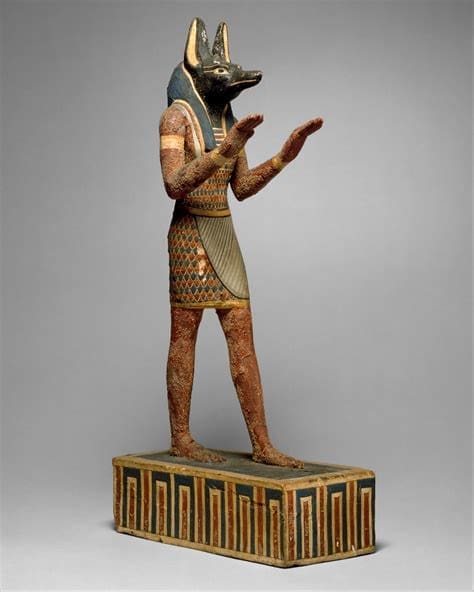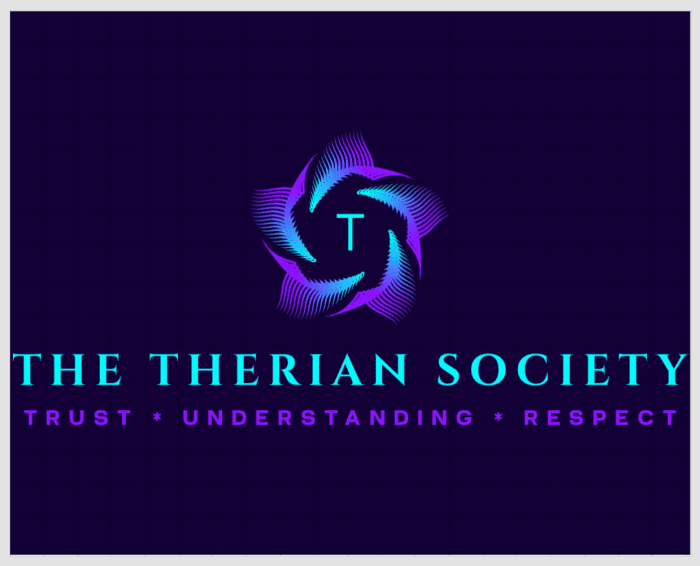Exploring the Mystical Bond Between Humans and Animals
The History of Animal Possession Across Cultures
Delve into the fascinating world of animal possession and discover how this unique practice has shaped cultures and beliefs throughout history.
The History of Animal Possession
Introduction
Animal possession is a phenomenon where individuals believe they are inhabited or controlled by the spirit of an animal. This concept spans various cultures and historical periods, manifesting in diverse ways through rituals, myths, and spiritual practices. This document explores the rich history of animal possession, tracing its roots from ancient civilizations to modern interpretations.
Ancient and Traditional Beliefs
Ancient Egypt
In ancient Egypt, animal possession was intertwined with religion and mythology. Deities often possessed animal forms or had animal attributes, such as the lioness-headed Sekhmet or the falcon-headed Horus. Priests and priestesses conducted rituals to invoke these deities, sometimes believing themselves to be temporarily possessed by the divine animal spirits to gain their wisdom or power.
Shamanistic Traditions
Shamanism, practiced by various indigenous cultures worldwide, often involves animal possession. Shamans enter trance states to communicate with the spirit world, seeking guidance from animal spirits. These spirits may possess the shaman, allowing them to channel the animal’s strength, agility, or other attributes. This practice is seen in:
- Siberian Shamanism: Shamans in Siberia often work with animal spirits, such as the bear or eagle, during healing rituals or spiritual journeys.
- Native American Traditions: Many Native American tribes believe in the concept of power animals or spirit animals, which can possess a person during ceremonies to provide protection or insight.
African Traditions
In various African cultures, animal possession is a significant aspect of spiritual practice. For instance, the Yoruba religion involves rituals where priests and priestesses become possessed by Orisha spirits, some of which are associated with animals like the thunder god Shango, symbolized by the ram.


Classical and Medieval Periods
Ancient Greece and Rome
Animal possession was present in Greek and Roman mythology and religion. The god Dionysus was often associated with animal possession, and his followers, the Maenads, were believed to be possessed by the spirit of wild animals, leading to frenzied and ecstatic states during rituals.
Medieval Europe
In medieval Europe, the concept of animal possession took on a darker tone, often associated with witchcraft and demonic activity. People accused of witchcraft were sometimes believed to be possessed by animal demons or to have the ability to transform into animals (lycanthropy). This period saw a conflation of animal possession with fear and superstition.
Modern Interpretations and Practices
Voodoo and Santería
In Afro-Caribbean religions such as Voodoo and Santería, animal possession remains an integral part of spiritual practice. Practitioners believe that spirits, known as Loa or Orisha, can possess individuals during ceremonies. Some of these spirits have animal forms or attributes, and the possessed individual may exhibit behaviors or characteristics of the animal.
Contemporary Shamanism
Modern shamanic practitioners continue to explore animal possession as a spiritual experience. Workshops and retreats often teach techniques to connect with animal spirits, inviting possession for healing and personal growth. These practices draw on traditional shamanistic methods, adapted for contemporary spiritual seekers.
Psychological and Symbolic Perspectives
In contemporary psychology, animal possession can be interpreted symbolically. Carl Jung’s concept of archetypes includes the idea that animals represent fundamental aspects of the human psyche. Possession by an animal spirit can thus be seen as integrating these primal aspects into one’s consciousness. This perspective is often explored in depth psychology and psychotherapy.



Cultural Representations
Literature and Media
Animal possession has been a recurring theme in literature, film, and television. From classic stories like Robert Louis Stevenson’s “Dr. Jekyll and Mr. Hyde,” which explores the duality of human and animal nature, to modern films like “The Lion King,” which incorporates shamanistic elements and ancestral animal spirits, this concept continues to captivate audiences.
Art and Performance
Artistic representations of animal possession are found in various cultures. Tribal dances, masks, and costumes often depict the transformation into or possession by animals. These performances serve both ritualistic and entertainment purposes, preserving the cultural significance of animal possession.
Conclusion
Animal possession is a multifaceted phenomenon with deep roots in human history. From ancient religious practices to modern spiritual movements, the belief in and experience of being possessed by animal spirits has evolved, reflecting broader cultural and psychological themes. Understanding this rich history enhances our appreciation of the diverse ways humans have sought to connect with the natural world and the animal kingdom.
Understanding Animal Possession
Animal possession has been a significant aspect of many cultures around the world. From the shamanistic traditions of indigenous tribes to the spiritual practices in ancient civilizations, the belief in animal spirits inhabiting humans has played a crucial role in shaping societal norms and rituals. This section provides an in-depth look at the origins, evolution, and cultural significance of animal possession, highlighting its impact on various communities and their way of life.
Chronological History of Animal Possession
Explore the key moments in the history of animal possession and its cultural impact through the ages.
View Full Time line here
The concept of animal possession has a long and varied history across different cultures and time periods. Here’s a comprehensive timeline detailing how beliefs in animal possession have evolved:
Prehistoric and Ancient Times
Paleolithic Era (c. 2.5 million – 10,000 BCE)
- Shamanism: Early human societies often believed in shamanistic practices where shamans could transform into animals or channel animal spirits for guidance, healing, or spiritual journeys.
Ancient Egypt (c. 3100 – 30 BCE)
- Animal Deities: Animals were revered as gods or symbols of gods. For instance, the goddess Bastet was associated with cats, and the god Anubis was depicted as a jackal. These deities were believed to possess animal forms.
Ancient Greece (c. 800 – 146 BCE)
- Mythology: Greek mythology included stories of gods and humans transforming into animals. The concept of humans being temporarily possessed or influenced by animal spirits was part of these mythic narratives.
Middle Ages
Medieval Europe (5th – 15th century)
- Folklore and Witchcraft: Beliefs in witches transforming into animals or being accompanied by animal familiars (thought to be demons in animal form) were prevalent. The idea of animal possession was often linked to dark magic and demonic influence.
Indigenous Cultures Worldwide (various periods)
- Animism: Many indigenous cultures across the world, including Native American, African, and Australian Aboriginal traditions, believed in animism, where animals possess spiritual significance and can be possessed by spirits or deities.
Early Modern Period
Renaissance Europe (14th – 17th century)
- Symbolism and Allegory: Animals were often used symbolically in literature and art to represent human traits and spiritual concepts. While not direct possession, the allegorical use of animals suggested a deep connection between human and animal spirits.
Colonial Period (16th – 18th century)
- Encounters with Indigenous Beliefs: European colonists encountered indigenous beliefs in animal spirits and possession, often documenting and sometimes adopting aspects of these beliefs.
Modern Era
19th Century
- Spiritualism and Theosophy: Movements like spiritualism and theosophy incorporated beliefs in animal spirits and reincarnation, suggesting that human souls could reincarnate as animals or communicate through them.
20th Century
- Psychology and Anthropology: Early 20th-century psychologists and anthropologists studied shamanistic and animistic beliefs, framing animal possession within the context of cultural practices and human psychology.
- Popular Culture: Literature and films began to explore themes of human-animal transformation and possession, often inspired by older myths and folklore.
Late 20th – Early 21st Century
- New Age and Neo-Shamanism: Contemporary New Age movements and neo-shamanistic practices revived and adapted ancient beliefs in animal spirits and possession, often emphasizing personal spiritual growth and connection with nature.
- Media and Entertainment: Books, movies, and television shows frequently feature themes of animal possession and transformation, reflecting ongoing fascination with these concepts.
Contemporary Beliefs
21st Century
- Cultural Continuation and Adaptation: Many indigenous and traditional cultures continue to practice and believe in animal possession as part of their spiritual and cultural heritage.
- Scientific and Metaphysical Exploration: While mainstream science remains skeptical of possession, there are ongoing explorations in fields like parapsychology and metaphysics regarding the nature of consciousness and spiritual experiences, sometimes touching on themes of animal possession.
Throughout history, the belief in animal possession has been a multifaceted concept, evolving from ancient shamanistic practices to modern spiritual movements, reflecting humanity’s enduring connection with the animal kingdom and the spiritual realm.

'3000 BC
Early Shamanistic Practices
Shamans in ancient Siberia believed in the power of animal spirits to guide and protect their tribes, performing rituals to invoke these spirits.
'1500 BC
Egyptian Animal Deities
In ancient Egypt, gods and goddesses were often depicted with animal heads, symbolizing their connection to the natural world and their divine powers.
'500 AD
Totemism in Native American Cultures
Native American tribes revered totem animals as spiritual guides, believing that each person had a specific animal spirit that influenced their life and destiny.
'1200 AD
Animal Possession in African Traditions
Many African cultures practiced animal possession as part of their religious ceremonies, where individuals would embody animal spirits to gain wisdom and strength.
Explore the Rich History of Animal Possession
Visual Gallery of Cultural Artifacts
Community Voices
Joining The Therian Society has been a transformative experience. The insights I’ve gained into the cultural significance of animal possession are invaluable.
The community here is incredibly supportive. Sharing my experiences and learning from others has deepened my understanding of my own therian identity.
The resources and discussions on this site have opened my eyes to the rich history and diverse practices related to animal possession across cultures.
The Therian Society is a haven for anyone interested in the intersection of culture and animal possession. The knowledge and camaraderie here are unmatched.

Join Our Community
Become a part of The Therian Society today and dive deep into the fascinating history and cultural significance of animal possession. Engage in meaningful discussions, share your experiences, and connect with like-minded individuals.






